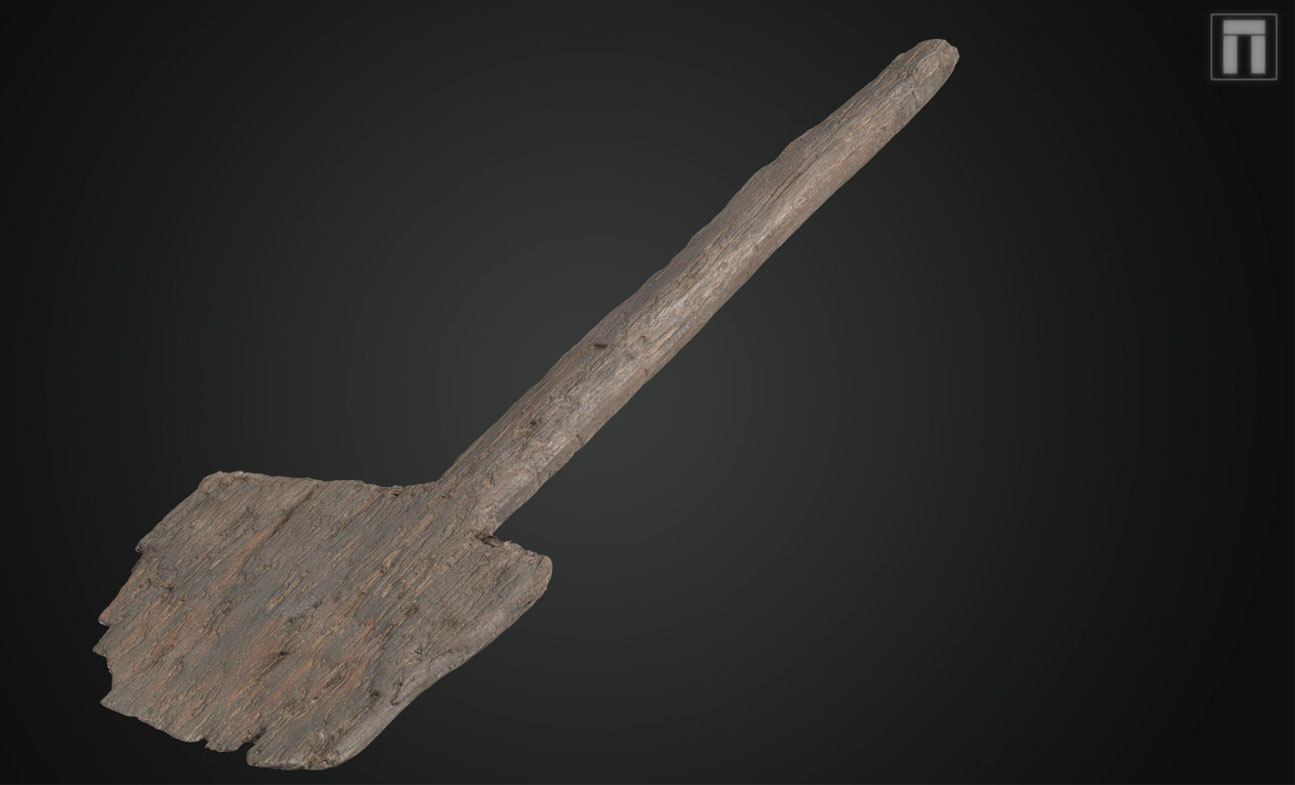Archaeologists have uncovered one of the oldest and most complete wooden tools ever found in Britain during construction at Kier’s compensatory habitat scheme ‘The Moors at Arne’.
Excavations taking place as part of the construction process have unveiled an extremely rare and near complete prehistoric wooden spade, with preliminary scientific dating confirming it is from the Bronze Age, and is around 3500 years old. This makes is one of the earliest wooden tools to be discovered in Britain.
The wooden spade was discovered by Wessex Archaeology for The Moors at Arne project. Kier is the contractor delivering this project on behalf of the Environment Agency and its project partners, RSPB and Natural England.
The spade would have been a precious tool and a great loss to its prehistoric owner and provides physical evidence of the relationship humans have had with this challenging waterlogged landscape for thousands of years.
It is extremely rare for organic material like wood to survive in the ground for this long except in exceptional circumstances. It is thanks to the waterlogged condition of the ground at this site, on the edge of Poole Harbour, that the spade has survived for over 3000 years.
"The moment the spade started to be uncovered the team on site knew it was a very special object and now we’re able to analyse it here in the laboratory, we’re starting to reveal its story. It’s made of oak and radiocarbon dating of the wood itself confirms it is c.3500-3400 years old, placing it firmly in the Middle Bronze Age. Further scientific dating will shine more light on when the spade was made. This is an incredibly exciting moment and we’re looking forward to finding out more as the process unfolds."
Ed Treasure, Wessex Archaeology
The spade has been hewn from one solid piece of oak, it is likely to have taken someone many hours of manual work to create. This would have made it a precious tool to a prehistoric person and one that could be reused and refashioned for other purposes if broken or damaged, making the incredible survival of this piece even more fascinating.
Although fragile, the spade offers a rare glimpse into how humans have worked with the opportunities and challenges presented by this landscape for millennia. By the Middle Bronze Age, people across the country were settled into rural agricultural lifestyles that we might recognise today, with farmsteads, villages and extensive field systems. However, there is little evidence to suggest that there was a permanent domestic settlement where the spade was uncovered. Instead, archaeologists are exploring the idea that people were visiting this site seasonally.
Water has been a dominating force in this part of the country for thousands of years. In the Middle Bronze Age, this land would have been at the mercy of the elements, prone to flooding in the winter months, and then drying out over summer. This would have provided the opportunity for past populations to make use of its rich natural resources. It could have been used as a place to cut and dry peat, as pasture for grazing animals or for hunting, fishing, gathering rushes for thatch and basket weaving and perhaps cultivating crops. The spade was found in a circular ditch that could have served several functions, including as a means of drying or protecting those useful resources.
"We're working across a vast landscape that is dominated by nature with very little to suggest to the naked eye that much human activity has taken place here. However, just beneath the surface we've uncovered evidence of the ways humans have cleverly adapted to the challenges presented by this particular environment for over 3000 years. The spade is a fascinating part of the story and as research continues we're looking forward to exploring the relationship between the spade and the ditch, and what else they can tell us about life here 3000 years ago."
Greg Chuter, the Environment Agency Archaeologist

Only one other Bronze Age wooden tool like this has been recovered in Britain. Antiquarians excavating an ancient mine in Cheshire in 1875 uncovered a long, leaf-shaped item later named the ‘Brynlow Shovel’. It was eventually radiocarbon dated in 1993, returning a date of 1890-1670 BP meaning it is almost 4000 years old. It is hoped that ongoing research will help us to understand the role that these wooden tools played and the similarities and differences in their use.
The spade was uncovered during archaeological excavations for The Moors at Arne project, which is adapting over 150 hectares of land into a diverse wetlands habitat. This type of habitat is being lost in other areas of Poole Harbour due to 'coastal squeeze'. This is a term used to describe to effect of rising sea levels pressing against structures made in the environment such as flood defences resulting in a loss of intertidal habitat such as mud-flats and salt marsh.
"The current climate challenge poses increasingly severe risks for coastal ecosystems and coastal communities all around the globe. The archaeological story of The Moors at Arne gives us an incredible understanding of how people lived thousands of years ago and adapted to change. Working on complex environmental projects like this, gives us the opportunity to share fascinating insights into the past and explore what this means with communities today."
Matt Phillips, Senior Project Manager, Kier
As the project continues, the team look forward to generating new knowledge about the impact of the environment on this landscape through time, and a better understanding of the way humans have worked with the challenging conditions it has presented for thousands of years.
Take a watch of the video below to see the moment the spade was uncovered.


